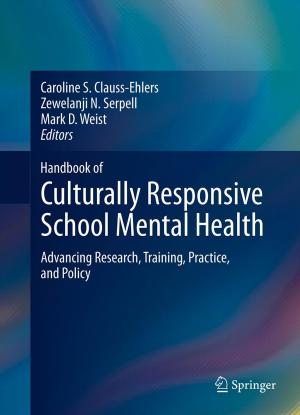Stammering (Stuttering)
A Complex Vocal Tic
Nonfiction, Family & Relationships, Parenting, Emotions, Health & Well Being, Psychology, Compulsive Behaviour, Child & Adolescent, Child Development| Author: | Patricia Sims | ISBN: | 1230000218066 |
| Publisher: | Mortimore Books | Publication: | February 12, 2014 |
| Imprint: | Language: | English |
| Author: | Patricia Sims |
| ISBN: | 1230000218066 |
| Publisher: | Mortimore Books |
| Publication: | February 12, 2014 |
| Imprint: | |
| Language: | English |
This document includes a paper presented at the 6th Oxford Dysfluency Conference (Is Stammering a Complex Tic?). It also contains answers to some Frequently Asked Questions about stammering (stuttering).
It is based on the detailed observations of an experienced Speech and Language Therapist, made over more than two decades.
Male : female ratios for the incidence of stammering, other speech or language difficulties, dyslexia, Tourette syndrome, autism, hyperactivity/ADHD and dyspraxia are compared. Their uniformity (3-4 males to each female) is considered in terms of an underlying factor. It is proposed that this factor is our tension and anxiety and the manner in which we express it. A case is made in support of this hypothesis.
It is necessary to consider that tension or anxiety which is within normal limits can be a causal factor in stammering and other developmental difficulties. Tension and anxiety are normal attributes which are essential to us all; normal levels can be high. This paper propounds the view that tension or anxiety which falls within the normal range can be strong enough to be implicated in the various speech, language and other difficulties. The tension or anxiety does not need to be extreme or obvious.
The prevalence of repetitive speech and behaviour in childhood is demonstrated and examples are given. The increase in repetitive and compulsive behaviour with tension and stress is discussed. Any behaviour can become compulsive and tics are manifest in a variety of ways; for example, repetitive tongue clicking, shoulder shrugging, throat clearing, blinking, twitching and vocal mannerisms. Repetitive and compulsive behaviour in Tourette syndrome is acknowledged and the relationship between stammering and tics is discussed.
The change in complexity from simple word repetition (which is how stammering begins), to blocks and prolongations in speech is explained and the role of conditioning of behaviour is acknowledged.
Prevention and treatment of stammering is discussed, based on the view that stammering is a complex tic.
The usefulness of a Personality Checklist for young children is discussed.
This document includes a paper presented at the 6th Oxford Dysfluency Conference (Is Stammering a Complex Tic?). It also contains answers to some Frequently Asked Questions about stammering (stuttering).
It is based on the detailed observations of an experienced Speech and Language Therapist, made over more than two decades.
Male : female ratios for the incidence of stammering, other speech or language difficulties, dyslexia, Tourette syndrome, autism, hyperactivity/ADHD and dyspraxia are compared. Their uniformity (3-4 males to each female) is considered in terms of an underlying factor. It is proposed that this factor is our tension and anxiety and the manner in which we express it. A case is made in support of this hypothesis.
It is necessary to consider that tension or anxiety which is within normal limits can be a causal factor in stammering and other developmental difficulties. Tension and anxiety are normal attributes which are essential to us all; normal levels can be high. This paper propounds the view that tension or anxiety which falls within the normal range can be strong enough to be implicated in the various speech, language and other difficulties. The tension or anxiety does not need to be extreme or obvious.
The prevalence of repetitive speech and behaviour in childhood is demonstrated and examples are given. The increase in repetitive and compulsive behaviour with tension and stress is discussed. Any behaviour can become compulsive and tics are manifest in a variety of ways; for example, repetitive tongue clicking, shoulder shrugging, throat clearing, blinking, twitching and vocal mannerisms. Repetitive and compulsive behaviour in Tourette syndrome is acknowledged and the relationship between stammering and tics is discussed.
The change in complexity from simple word repetition (which is how stammering begins), to blocks and prolongations in speech is explained and the role of conditioning of behaviour is acknowledged.
Prevention and treatment of stammering is discussed, based on the view that stammering is a complex tic.
The usefulness of a Personality Checklist for young children is discussed.















